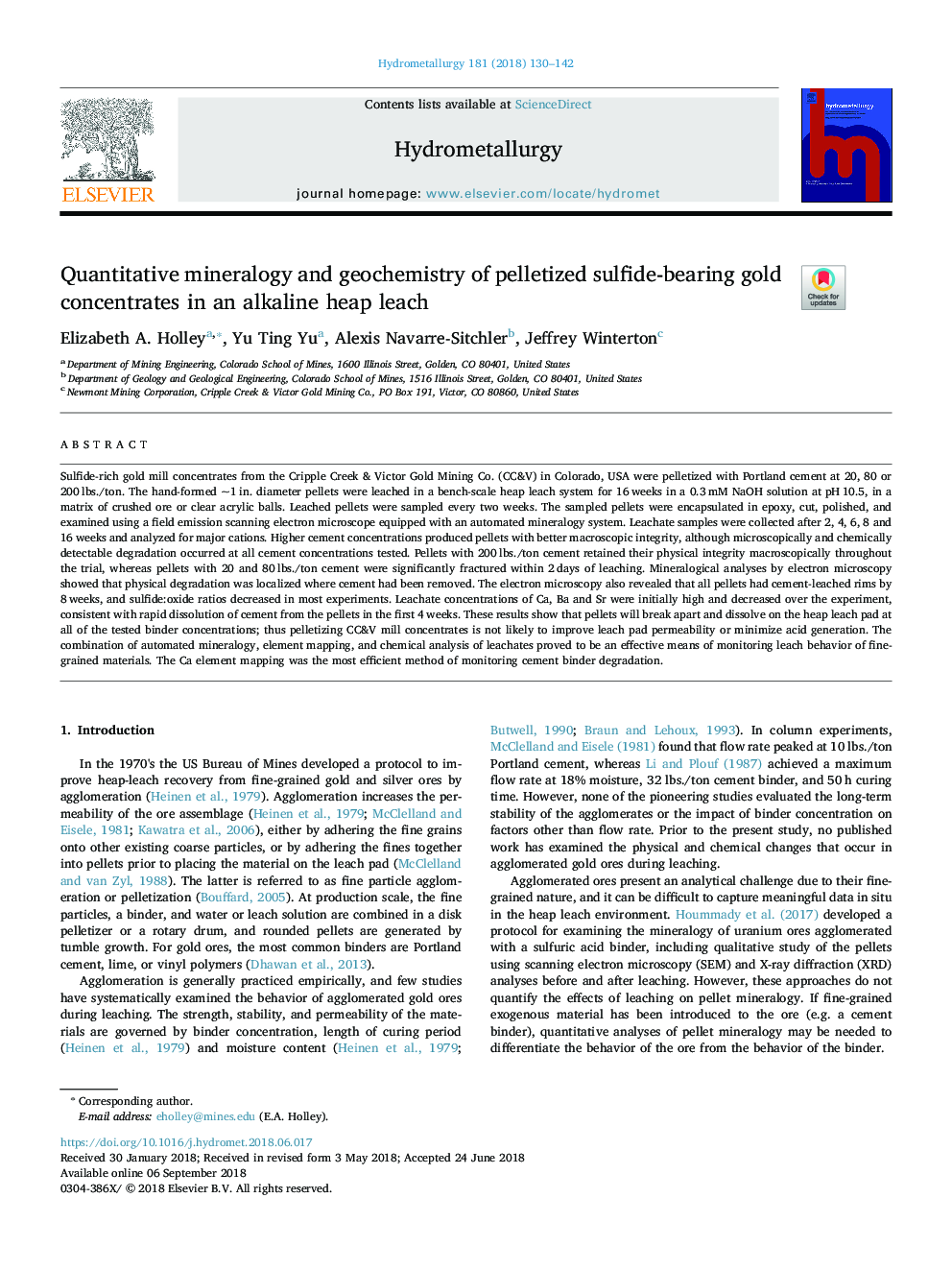| Article ID | Journal | Published Year | Pages | File Type |
|---|---|---|---|---|
| 10139072 | Hydrometallurgy | 2018 | 13 Pages |
Abstract
Sulfide-rich gold mill concentrates from the Cripple Creek & Victor Gold Mining Co. (CC&V) in Colorado, USA were pelletized with Portland cement at 20, 80 or 200â¯lbs./ton. The hand-formed ~1â¯in. diameter pellets were leached in a bench-scale heap leach system for 16â¯weeks in a 0.3â¯mM NaOH solution at pHâ¯10.5, in a matrix of crushed ore or clear acrylic balls. Leached pellets were sampled every two weeks. The sampled pellets were encapsulated in epoxy, cut, polished, and examined using a field emission scanning electron microscope equipped with an automated mineralogy system. Leachate samples were collected after 2, 4, 6, 8 and 16â¯weeks and analyzed for major cations. Higher cement concentrations produced pellets with better macroscopic integrity, although microscopically and chemically detectable degradation occurred at all cement concentrations tested. Pellets with 200â¯lbs./ton cement retained their physical integrity macroscopically throughout the trial, whereas pellets with 20 and 80â¯lbs./ton cement were significantly fractured within 2â¯days of leaching. Mineralogical analyses by electron microscopy showed that physical degradation was localized where cement had been removed. The electron microscopy also revealed that all pellets had cement-leached rims by 8â¯weeks, and sulfide:oxide ratios decreased in most experiments. Leachate concentrations of Ca, Ba and Sr were initially high and decreased over the experiment, consistent with rapid dissolution of cement from the pellets in the first 4â¯weeks. These results show that pellets will break apart and dissolve on the heap leach pad at all of the tested binder concentrations; thus pelletizing CC&V mill concentrates is not likely to improve leach pad permeability or minimize acid generation. The combination of automated mineralogy, element mapping, and chemical analysis of leachates proved to be an effective means of monitoring leach behavior of fine-grained materials. The Ca element mapping was the most efficient method of monitoring cement binder degradation.
Related Topics
Physical Sciences and Engineering
Chemical Engineering
Chemical Engineering (General)
Authors
Elizabeth A. Holley, Yu Ting Yu, Alexis Navarre-Sitchler, Jeffrey Winterton,
